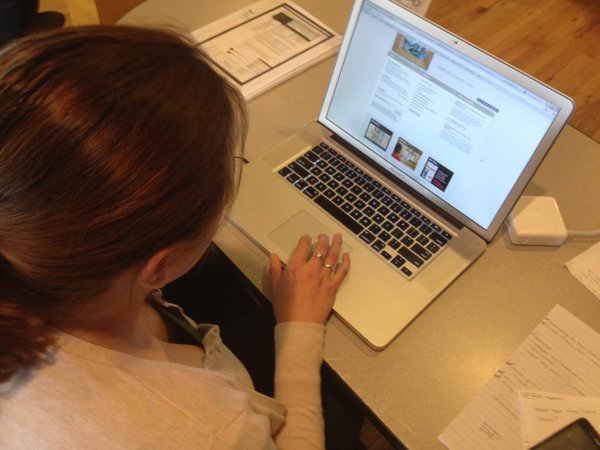Pemaquid Crunch
-
How much does a website cost?

As a web designer, "How much does a website cost?" is a question I hear a lot. It's not a question I want to hear, because it means the prospect isn't a very savvy shopper. No, I don't "heart it". Here's my standard reply:
Buying a website is like buying a car. A decent one costs anywhere from $5,000 to upwards of $100,000. As with a car, the exact price depends on what features you'd like to have, what you're going to use it for, and how much revenue you expect it to generate for you. You should be asking yourself not how little you can get away with spending, but rather how much can you afford to spend to get a high quality website that will work for you. You should spend as much as you can possibly afford to spend. Today, at the national level, an entry-level website with a content management system (CMS) will set you back about $30,000.
Then I ask the prospect how much they have budgeted. ;-)
About 8 times out of 10 I'll get one of two responses: a) They haven't allocated a budget and were hoping I would give them a number; b) they have a number but don't want to share it. Every once in a while I will hear the correct response (I say correct because this is the type of client I want to do business with): c) "We've allocated $xx,xxx for our website redesign. What can you do for that amount?"
Before I go further, remember that I said about "anywhere from $5,000....". I recently had a gentleman come to me who said his budget for a consumer-oriented e-commerce site was $1,500. That ain't going to work, my friend. I have to feed my family and keep the home fires burning. Nevertheless, you would not believe how often people think their e-business website shouldn't cost a whole lot more than a brochure, or want to work a trade of lobsters or antiques for their technology. Ah, Maine!
Let's talk a little bit about each of these responses.
If you haven't yet figured out your budget, it's really not my job to do that. It's not in my best interest to advise you on how little you should pay me. On the other hand, I will be happy to have an initial conversation with you and guide your thinking and help you understand what features your website needs to have and suggest options that would help maximize the effectiveness of your site. Any additional consultation, however, is business analysis, and while I'm happy to do that you should be prepared to compensate me for sharing my expertise.
If you refuse to disclose your budget, you're not doing yourself any favors. What you're indicating is that price, not the quality of the solution, is the most important criterion for selecting an interactive partner. You'll get exactly what you deserve: a vendor that's willing to promise the moon in a proposal while charging you the least. This sets up a situation where your vendor quite often will meet your requirements but will have to cut corners on the quality of features. If a small budget is also a tight budget you'll almost always find yourself at war with the vendor - you'll want more time spent on a feature (but won't be willing to pay for the additional time), and your vendor will always be looking to shave production time on features, which again impacts quality.
This is exactly the scenario I see with most RFPs that come across my desk. Unless the budget is defined, the selection criteria workable and objective and the client is a good fit for our expertise, I usually don't respond, because they don't lead to healthy client relationships and successful project outcomes.
When you share your project budget with potential vendors, what you are able to do is set price aside and focus on the most important factor to selecting a partner: expertise. When you take price out of the equation, suddenly competing solutions can be more effectively compared and evaluated, again based on the quality of the solution.
What should you be spending your money on? There's a lot to talk about, enough for a separate blog post, but it really just boils down to a couple of things: expertise at designing effective websites, strategic expertise within your industry, efficient production of creative and interactives that are of high quality and are relevant to your particular business objectives, and last but not least, maintenance.
That last part - maintenance - is almost always forgotten until it comes time to actually perform some maintenance on a website. You should have an annual budget for website maintenance. Most organizations don't, and that creates problems down the road. I've seen so many websites that are frozen in time because an annual maintenance budget wasn't allocated. As with a full-scale redesign, you should set aside as much as you can reasonably afford for maintenance so that your site can keep up with the latest trends affecting your digital marketing plan.
So, how much does a website cost? The best site money can buy, that most effectively helps you achieve your digital marketing objectives. Know those objectives well, before you go shopping.
Oh, and if you can find a web designer to build that e-commerce site for $1,500, and (s)he is able to come through for you, good on you! But understand that you're probably looking for a unicorn (you might do better with Shopify) and that what seems too good to be true at has a good chance of ending in disappointment for either you or the designer, and the world doesn't need another half-assed website.
Filed under: Web Design, Maine, Business, Clients, Procurement
This post has no comments yet
-
Reawakening

Photo: Sunrise, Pemaquid Lighthouse, New Harbor, Maine by John Bald via Flickr. Published with permission.
The number "7" seems to follow me around. I was born at 7:07am on the seventh of March in a year ending in "7" (I leave it to you to figure out which one). And it's been seven years since I launched the first incarnation of this blog in - you guessed it - March 2007. So though it's only coincidence, it still seems appropos to be getting things back up and writing at this time.
The Web has changed a lot since 2007. Back then, Ajax was a fairly new technology; now everything is "fortified" with it, and people whisk through websites faster because of it. Social media has taken the world by storm, and I was at SXSW in 2007 when Twitter hit the big time (we miss you, Fail Whale!). The mobile Web is here to stay, and an explosion of portable devices has led web designers to adopt new approaches to creating bulletproof user interfaces, including Responsive Web Design (the one clients have started asking about in about the past year or so but which has been around since 2010). App stores abound. Thankfully, the poseurs have stopped saying "Web 2.0".
A lot has happened at Pemaquid Communications as well. We were the first interactive shop in Maine to build a Facebook app. We set up social media accounts and developed strategic plans for popular regional brands like Oakhurst Dairy. We worked with the state of Massachusetts to make sure their online health insurance exchange met web site accessibility and section 508 compliance standards for the rollout of the Affordable Care Act. We created a content management system based on the Django open source framework which we market to museums as called Curator (demo) but which about two dozen clients from many different business sectors use, and it's never been hacked (I'm lookin' at you, WordPress). Pemaquid has been nominated for 10 Best of the Web awards by TechMaine - more than any other creative firm. in 2009 we won an inaugural entreverge award for creating the first coworking space in Portland, WYCWAH, and pioneering what has now become a popular way for digital creatives to work and collaborate.
It hasn't been all rainbows and unicorns. I've seen two talented collaborators leave to form their own competing business without even a glance back. A venture marketing creative interactive services to museums has not turned out to be a good get rich quick (or even get rich slow) scheme. And the creative economy has changed. A lot.
Building web sites, especially in a place like Portland, Maine, just isn't what it used to be. Clients and prospects are much more timid than they used to be. You can't really blame them, the economy tightened up quite a bit, and marketing budgets with them, and I think it's safe to say that things are never going to be like they were in the Good Old Days of '07.
Small and even medium sized businesses are just not in a position to take creative risks on the Web, and everyone has a story about how they were burned by some web developer whose custom code turned out to be bug-riddled. Building web sites today - that are mobile-friendly, accessible, well-integrated with social media tools and built-in blogs and other interactive features - is now more like building a fighter plane than drafting a brochure. So for many clients, building a web site is like building a bridge or a garage: a complex edifice that requires engineering and which much be reliable, but perhaps not a lot of inventive creativity.
Not long ago I talked to the owner of an amazingly talented firm in the Southeast, who said he had recently been on a conference call with about 60 other principals of interactive shops. All said they were feeling an economic pinch.
There do seem to be bright spots. User experience ("UX") designers are in demand like never before, especially those with an understanding of mobile UX. The education and health care markets appear to be strong and those firms that are able to stake out expertise in those markets seem to be doing better than most.
Even more encouraging is that there are signs that businesses (finally!) understand that good UX can be a competitive advantage. Capital One recently acquired Adaptive Path, one of the world's premier UX shops. I take that to mean two things: AP figured it would hard for them to continue to make a go of it as an independent firm, and more importantly, that Cap One realizes that as a bank with almost no branches, success for them is based largely on whether they can transform their mobile banking user experience into a competitive advantage (a low bar to clear, b/c the UX of most banks is horrible), so they've purchased the best UX talent money could buy.
So there's a lot to talk about when it comes to UX, and it seems as though people are listening, and that's a good thing. I hope we can get the conversation going right here. Are you ready?
Let's do this...
Filed under: Web Design, User Experience, UX, State of the Web, Portland, Maine
This post has no comments yet
